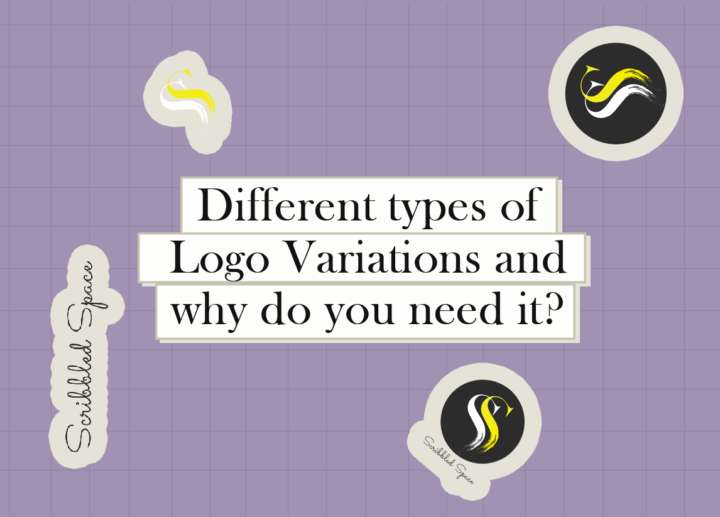Let’s assume, you already have a logo and it has hit the mark. So you’d think;Why does your brand need logo variations?
What if we ask you, can the same logo be utilised at various places or situations?
Suppose this is your logo, can it pass the different requirements?

Logo variations are not just for beautifying your material. They make your brand a lot more ‘flexible’ and scalable to different situations.
Imagine your business name is huge and you’re gonna have to place it on all your brand merchandise; even the smallest things like a tag for example. Now think how crammed your logo will look, almost unidentifiable right?
This is exactly why you need logo variations, to increase your logo’s usability in different instances so that it doesn’t lose its originality.
Hence, A Logo Variation is a modified version of your logo so that your logo is recognizable and fits with your branding. Its purpose is to make your content and marketing material look like they belong to your brand. Let’s have a look at 5 Different and Important Variations of your logo your business needs and why;
- Primary Logo:
- The Primary logo is your original (main) logo.
- It includes your full business name, a tagline and an illustration or symbol
- It serves as the logo your branding is based on.
- It is generally placed on website header, business cards, marketing materials, brand collateral, etc.

2. Secondary Logo:
- A secondary logo is an alternate logo, used as a simplified version of the original logo.
- The elements in the logo are rearranged, there’s no tagline and only essential elements are placed.
- Its purpose is to provide more flexibility so as to be used in different design settings.
- It is placed on social media and print materials.


3. Submark Logo:
- Sub-mark logo is the most compact version of your primary logo.
- It usually has few key elements like initials of the business name, the main symbol.
- Sub-mark logo is used on social media profile images, website or email footer, Pinterest and blog graphics, podcast cover, inner pages of things like workbooks, opt-in PDF’s, or webinar slides

4. Favicon:
- A favicon (short for favorite icon) is a small, 16×16 pixel icon used on web browsers to represent a website or a web page.
- Favicon is bold, clear and simple. It doesn’t consist of complicated elements.
- They are found on websites, browser’s bookmark bar, homepage and history.
- They act as memorable visual cues to the website and leave a lasting impression.

5. Elements:
- Brand elements/icon means to rip off the illustration/ graphic elements from the original logo and to use it independently.
- Elements are an effective way of using graphics to increase brand recognition.
- Elements are great to use on websites, social media, business cards, packaging or other marketing materials.

If you think that is something you never thought of, then it’s time to consider it.


